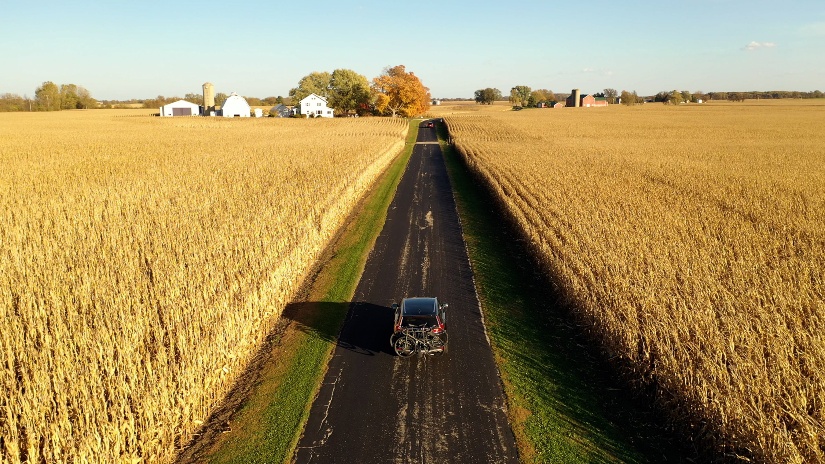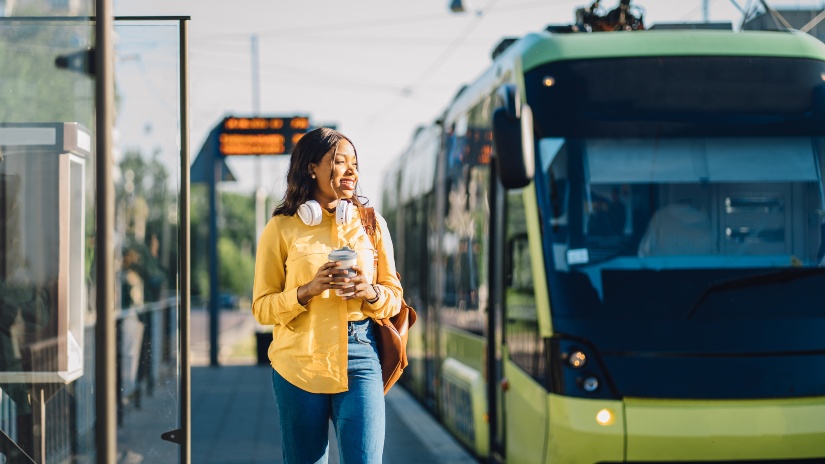By Harsha Badarinarayan Ph.D., Vice President, Hitachi America, Ltd.
People who don’t have access to transportation don’t have access to education, employment, healthcare and social service providers — not to mention supermarkets and pharmacies. It should come as no surprise, then, that transportation policy and practice play a central role in the health, well-being and economic independence of everyone in the United States.
It’s a common misconception that mass transit is more essential in cities than in rural communities. But the facts tell a different story. As noted in the preceding articles in this series, the Rural Transit Fact Book reports that only 4% of rural households use public transit, compared with 31% in metropolitan areas.1 A casual observer might attribute this disparity to the increased use of personal automobiles in rural areas. Yet, counterintuitively, it is rural counties in the U.S. that report the highest rates of households with no cars at all, according to Smart Growth America. In mostly rural counties, in fact, more than one million households don’t have access to a vehicle.2
Unlike their urban counterparts, who often can access groceries and other basic necessities on foot, rural residents are unlikely to have convenience stores or other shops close to their homes. Retail establishments, medical and social services, and government agencies in rural areas are more likely to be clustered within small downtowns or community centers that are not within walking distance for the majority of the local residents.
The situation is exacerbated for rural inhabitants with low incomes and those whose age or disability prevents them from driving. For low-income people, the lack of cost-effective mass transit or mobility services can worsen their financial position because they must make purchases at stores that are most accessible rather than those that may be farther from home but more affordable.
Senior citizens and people with disabilities also face escalating challenges where rural transit options are limited. Often, ride-share or taxi services are the only options and are limited in scope, service area or hours of operation, making it hard for rural residents to make and keep medical appointments, for example. And because demand exceeds supply, these services often come at a high cost in many rural communities. To make matters worse, those with impaired mobility or physical disabilities often find ADA-compliant transportation options scarce or nonexistent. Each of these restrictions has the potential to have a serious impact on rural residents’ health and well-being.
These conditions have equally — if not more troubling — adverse effects on Native Americans living on reservations. Tribal transit initiatives are challenged with low-density and dispersed populations, large service areas, long travel distances, geographical constraints, and diverse opinions about which groups can and should be served. When you add the many levels of government (tribal, local, county, state and federal) that must work together to deliver transportation to these residents, the road to delivering transportation becomes steep indeed.

We can improve transportation equity in these underserved communities by using the key tools of data collection and analysis that work so well in urban environments. However, overreliance on harvesting data from cell phones and mobile devices will yield an incomplete picture in rural communities, where those devices may not be common or in extensive use. Some measure of bias is unavoidable in any form of data collection, but transportation planners must take the time to examine data from underserved communities at a granular level if we are to make significant progress toward achieving genuine transportation equity.
Public-private partnerships (PPP) among policymakers and private sector stakeholders can leverage data collection and analysis to bring equity to transportation to these communities. Together, these partnerships can:

By partnering with private technology companies, transportation operators can use historical data to develop models that will forecast demand based on several different factors. This will help operators facilitate better coordination among the different available modes of transit (such as fixed-route options, ridesharing and volunteer-run transit). Instead of redesigning the entire service, transit authorities can use data models to optimize deployment and offer a more personalized service to the individuals of that community. By using data efficiently, transit planners can develop high-fidelity mathematical models that can improve ecosystem-level performance management across scheduling, coordination and maintenance of rural fleets. This will not only ensure a personalized user experience for the end consumer, but also provide a rich source of new data that can fuel a positive upward spiral of continuous improvement. As a result, the use of the right data and analysis techniques will reduce institutional silos, overcome geographical boundaries, and eliminate data inefficiencies while improving service and adding value for customers.
Forming a partnership with key stakeholders such as infrastructure providers (including local transit), communication providers (such as cellular companies), and data collection and storage providers (such as cloud providers) can add value in the form of advanced transportation technology, advanced analytics and cybersecurity. The key is to develop a viable business model that ensures value for customers who use the system and the multiple stakeholders who contribute their expertise. The KPIs for success would be measured in increased standard of living, improved wages, better schools and the improved health of individuals.
When we leverage technology and data in this intelligent way, we can improve access to equitable transportation for all — which is a basic right and a crucial path toward realizing equity across society.

Vice President, Hitachi America, Ltd.
Harsha Badarinarayan is the Vice President of Research and Development at Hitachi America, Ltd. He has been with Hitachi for over 18 years. In his current role, Harsha is involved in Technology Strategy & Planning for automotive business expansion in the U.S., specifically related to the Autonomous Vehicles & Connected Mobility. His work focuses on developing automated driving technology and identifying potential go-to-market (GTM) opportunities for automotive-related use cases. Harsha holds 15 U.S. patents and has authored or co-authored over 30 technical publications.